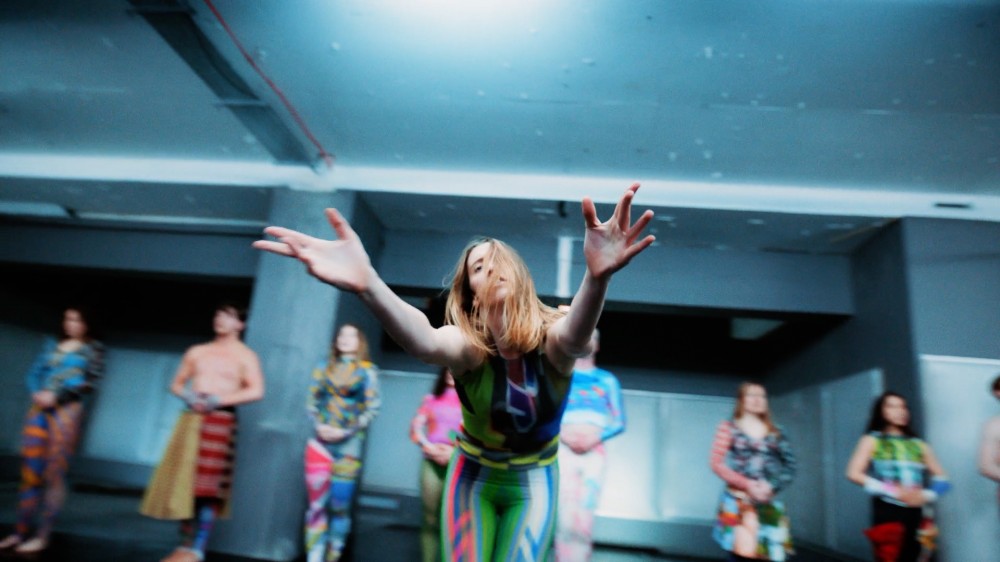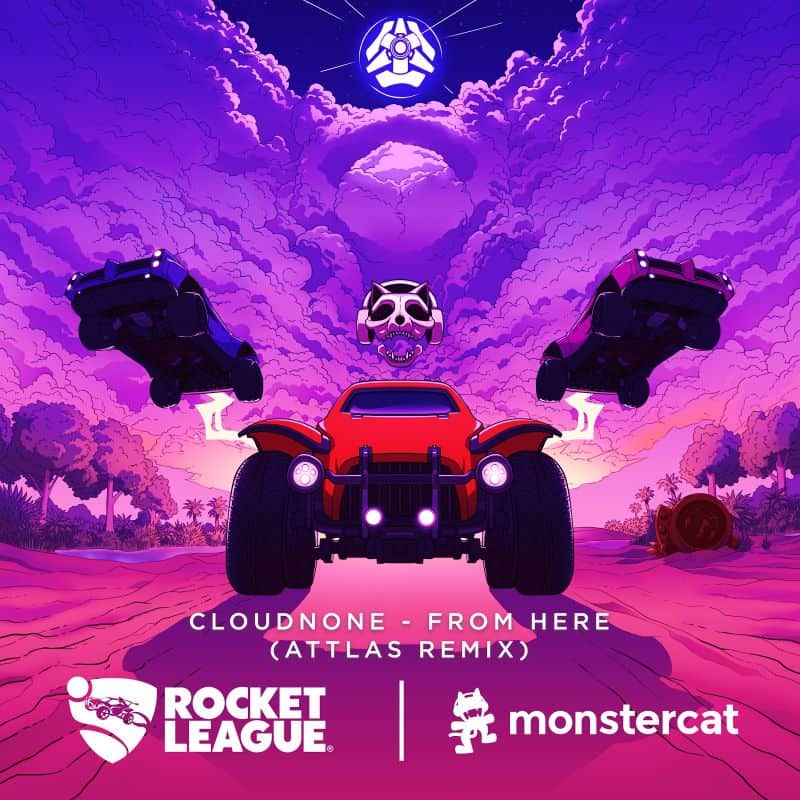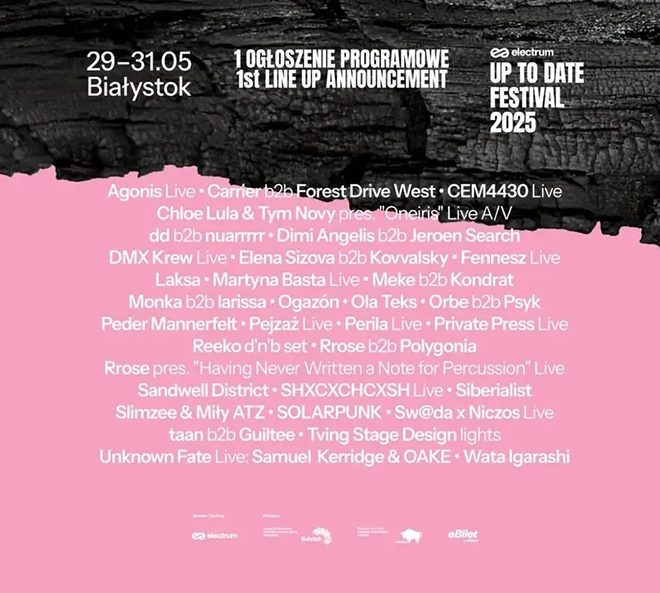
Fact 2021: Residency
This year we invited a new cohort of world class artists, musicians and collectives to participate in Fact’s online Residency program.
Faced with the unremitting bleakness of a world that is, depending on who you ask, any combination of sickly, in turmoil and on fire, it is becoming more and more of an impossible task to parse the incessant noise of cultural production in 2021, to sort through zettabytes of cursed content in order to locate and amplify those voices that truly have something to say. This year we’ve drawn strength from those artists, studios and communities dedicated to defining their own narratives, constructing their own worlds and building their own communities in an effort to try to make this task a little easier.
We invited a new cohort of artists, musicians and collectives to take over Fact and showcase the breadth and depth of their work. From multidisciplinary practitioners like Julianknxx and Theresa Baumgartner, ascendent stars like Blackhaine and anaiis, artists redefining performance and movement like Holly Blakey and Tianzhuo Chen, to collectives tirelessly excavating their own space, IRL and otherwise, like Actual Objects and Seoul Community Radio, our online residents have shone light through the contemporary gloom and acted as markers by which we have orientated our own thoughts and emotions.
Taken as a whole, a tentative optimism can be traced through the work of these artists. Each demonstrates methods and strategies for navigating the relentlessness of the now, from the most intricate, technologically advanced engagements with universal data, to the smallest, simplest gestures of human failure and resilience, from the most universal themes of faith, embodiment and emancipation, to the most personal statements of vulnerability and pain. We hope that amongst this work you too can tap into this optimism and find something to draw strength from.
Actual Objects describe themselves as an experimental, multidisciplinary creative studio, but if you asked any of the 12 or so artists, directors and programmers that make up the team what they spend most of their time doing, they would probably answer you with two words: world building. Founded in 2019 by husband and wife creative duo Rick and Claire Farin, alongside Rick’s childhood friend, producer Nick Vernet, the studio emerged out of a shared interest in CGI, which they developed during their time enrolled in a graduate program at the Southern California Institute of Architecture, or SCI-Arc. It was there that they met Cole Daly and Case Miller, who together with graphic designer Collin Fletcher make up the core of the studio’s current iteration. Following a period of working out of their bedrooms, it was a group decision to move their computers into an office space in Los Angeles’ Chinatown that heralded the birth of Actual Objects. Bringing together a wide variety of disciplines, including Rick’s background making music as Eaves, Claire’s skills as a painter and Miller’s experience as a researcher and programmer, the team set out to change the aesthetic landscape of what computer generated visuals can do and how they can be applied. “We were trying to bring a longer, more developed art practice into what was going fast with digital art,” explains Claire, succinctly.
anaiis is an artist who has spent much of her career at war with adversity. Relocating to London from New York in 2015 to focus on her career as an artist, anaiis, like many artists before her, has faced a myriad of obstacles, both internal and external, to such an extent that she admits to spending much of the last few years in an extremely difficult place. Persevering through a litany of major label complications that have unfortunately become a commonplace occurrence in the darker recesses of the mainstream music industry, anaiis was able to release two projects of introspective, emotional music, the 2018 EP before zero and a full-length project darkness at play, which was released the year after. Yet she has waited until now, with the forthcoming release of her debut album, This Is No Longer A Dream, to try to come to terms with full scope of the pain and trauma she has faced over the last six years. “A lot of the record is dealing with this surreal place that I was in where I had a lack of clarity around what was real and what wasn’t,” she admits.
For multidisciplinary artist, MC and choreographer Tom Heyes, Blackhaine is both an artistic alias and shorthand for the “dark, hateful place” that his work is channelled from. Approaching sound, image, movement and poetry with the same visceral energy, Heyes seeks to transform the grey, bleak landscapes he associates with his birthplace of Lancashire and his native Manchester into sites of creative catharsis, elevating stories of depression, deprivation, substance abuse and small-time gangsters into vital transmissions from Britain’s darkest depths. At once confrontational and intimate, Heyes probes the limits of rap machismo, street poetry, experimental dance and, ultimately, what it means to be an artist from a working class background. He offsets aggression, braggadocio and nihilism with intense vulnerability and unrefined honesty, a dichotomy with which he is able to bring together a dizzying array of influences, from Moor Mother and Playboi Carti to William S. Burroughs and Allen Ginsberg. Stripping away convention, Blackhaine seeks to replace his own limitations, both physical and emotional, with an armour of a paler shade.
“I’ve noticed in everything I’ve done, every single film, every single live show, I’ve always killed a man,” admits Holly Blakey. “There’s always Grand Theft Auto style violence going on, like a perverse sort of sexy violence. I can’t fucking help it, I seem to always do these things and I imagine it’s because there’s a lesson in there that I haven’t learnt yet.” One of the things that makes Blakey’s approach to movement so unique is the joy and vitality she finds in unresolved spaces. In her eyes, the truest forms of expression are the movements we make unconsciously, when sweating together in nightclubs, dancing in unison to the same beat. She finds inspiration in packed kitchens at house parties, or deep in a throbbing rave, and it is in the imperfect, disorganised nature of these environments that she observes true beauty. It’s impossible to move through these scenarios perfectly, and it is the visceral, imprecise and instinctual ways in which people navigate this terrain that Blakey seeks to translate into dance. Ask anyone who has danced with Holly and they’ll tell you that these landscapes, emotional or otherwise, are the perfect places to learn lessons. Through mutual acts of generosity and shared intimacy, Blakey is able to inhabit a space where this learning process is displayed proudly, in which she offers up something of herself, to her collaborators and to her audience. “When I’m making work I want to be honest,” she asserts, “I want for that honesty to create connections with people who watch it.”
In her beautiful and devastating 2016 book In The Wake: On Blackness and Being, scholar Christina Sharpe delivers a stark rallying cry: “We must think about Black flesh, Black optics, and ways of producing enfleshed work.” Drawing inspiration and strength from Sharpe’s words, interdisciplinary poet Julianknxx brings together sound, image and performance in a discursive, enfleshed poetic practice. His work is deeply connected both to the foundational stories and languages of his birth place of Freetown, Sierra Leone, and to the sounds and voices of his current home in London. It is the passage between these places, and their twin histories of conflict and colonialism, that the poet seeks to document, penning what he calls a “history from below.” For his Fact Residency, which coincides with his artist residency at 180 The Strand, the poet selected a line from his stunning visual poem In Praise Of Still Boys, “you are what’s left of us”, as a lens through which to consider the world left in the wake of a global pandemic. Thus “you are what’s left of us” becomes We Are What’s Left Us, as Julianknxx takes stock of his friends and family, his collaborators and influences, as he traces an expansive and ongoing conversation between the many voices, past and present, that make up the cultural patchwork of his life. “What are we holding?” he asks. “The air is different now, we need to think about how we breathe.”
From the most simple sine wave to the most intricate data visualisation, Ryoji Ikeda understands his audiovisual art practice in explicitly musical terms. “Music is beautiful because you can’t see it, and you can’t touch it, but everyone knows it,” he asserts. “You don’t need to have it explained, you don’t need special tools to understand it. You can charge it with meaning all by yourself.” Though the dizzying scope of the work featured in the artist’s exhibition at 180 Studios extends from the coordinates of the known universe to the microscopic structure of a protein, the intellectual thrust of these installations and sound works is much less important than their emotional impact – how they make us feel. By situating his work in a liminal space, between the beautiful and the sublime, the quiet and the cacophonous, the one and the zero, Ikeda holds his audience in an intensely evocative environment, allowing us to charge his compositions with meaning on our own terms. By bringing together these different facets of his practice in a single expansive orchestration, Ryoji Ikeda joins the dots between his nascent sound experiments to the most complete expression of the artist’s vision of “an aesthetics of data”. Understood as the repertoire a self-described composer, the signature of a Ryoji Ikeda composition becomes clear. With one ear tuned to the conceptual and the other to the physical, Ikeda composes for both your body and your mind.
This year marks the fifth anniversary of Seoul Community Radio, a vital node of the city’s thrilling electronic music scene. Over the last five years the station has developed from an irregularly updated SoundCloud account to an essential outpost for the discovery and support of some of the most exciting Korean artists, DJs and collectives, beaming weekly live streamed broadcasts from their base of operations in Itaewon, the epicentre of Seoul’s dance music scene. Having only recently expanded from a dingy basement to a fully-fledged recording hub, the station now stands as a focal point for an extremely passionate and dedicated community. “It’s a very small scene of underground music aficionados in Seoul, that’s why I think it’s quite close knit,” explains Rich Price, one of Seoul Community Radio’s co-founders alongside DJ Bowlcut, the station’s resident DJ and technical mastermind, and creative director Seulki Lee, a designer who VJs as Whatisit. Citing Seoul institutions such as Mystik, Vurt and Cakeshop as key inspirations, Price and the station’s other founding members found themselves contributing to an interconnected network of scenes that was in desperate need of a point of convergence. Inspired by a new wave of online radio, including stations such as NTS, Berlin Community Radio and Red Light Radio, Seoul Community Radio was born.
In recent years Theresa Baumgartner has emerged at the forefront of a new generation of artists blurring the lines between installation art, audiovisual performance and experimental film. Working in collaboration with fellow Fact Resident MFO she has created immersive set design for Jlin, performed live with Juliana Huxtable and Ziúr as part of their live audiovisual poem OFF LICENSE and perhaps most notably, transformed Oscar-winning composer Hildur Guðnadóttir’s Grammy-winning score for Chernobyl into a site-specific, multi-channel performance alongside Guðnadóttir, Sam Slater, field recordist Chris Watson and Francesco Donadello. Yet, despite the dizzying scale and intricate technicality of Baumgartner’s projects, the artist’s interests do not lie in any one discipline or technology but in collaboration, instinct and emotional exchange. More often than not, Baumgartner tunes into her best ideas by listening to her gut. “It’s about creating some sort of feeling that lives with the music,” she explains. “I’m more interested in the emotional part in anything. At the end of the day I’d rather have people reaching back into themselves, being overwhelmed or just able to forget about themselves.”
According to Tianzhuo Chen, everything starts with a melody. Taken in context of the kaleidoscopic performance pieces he is best known for this concept might seem simplistic. Over the last few years his practice has only become more intricate and complex, stitching together elements from experimental theatre, rave culture, Hindu and traditional Chinese imagery, as well as his own Tibetan Buddhist beliefs, into mind-expanding immersive events. From ADAHA (2014) and ISHVARA (2016) to An Atypical Brain Damage (2017) and, most recently, Trance, his projects can be understood as esoteric exercises in complex world-building, with Chen terraforming nightclubs, theatres and gallery floors to create psychedelic landscapes for carnivalesque entities that challenge the limits of perception and understanding. Smashing together eastern and western cultures in an absurd amalgam, Chen orchestrates multidisciplinary art rituals that gesture towards the transcendent while remaining firmly grounded in earthly bodies, as Travis Jeppesen writes in Artforum: “Chen’s immersive protocol is suffused with his own yearning for transcendence, that fiery demand to get beyond this body, along with the dread that maybe this is all we’ve really got.” But it all starts with music, a melody in the artist’s head that swells to encompass the heavens and the earth.



